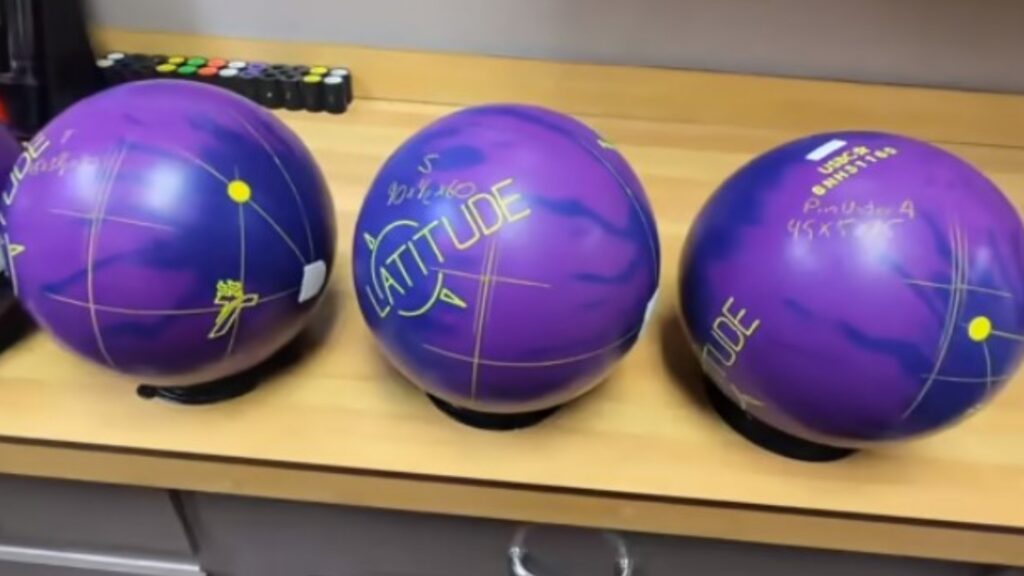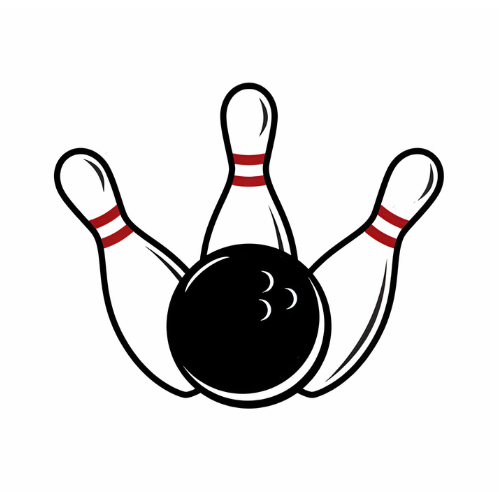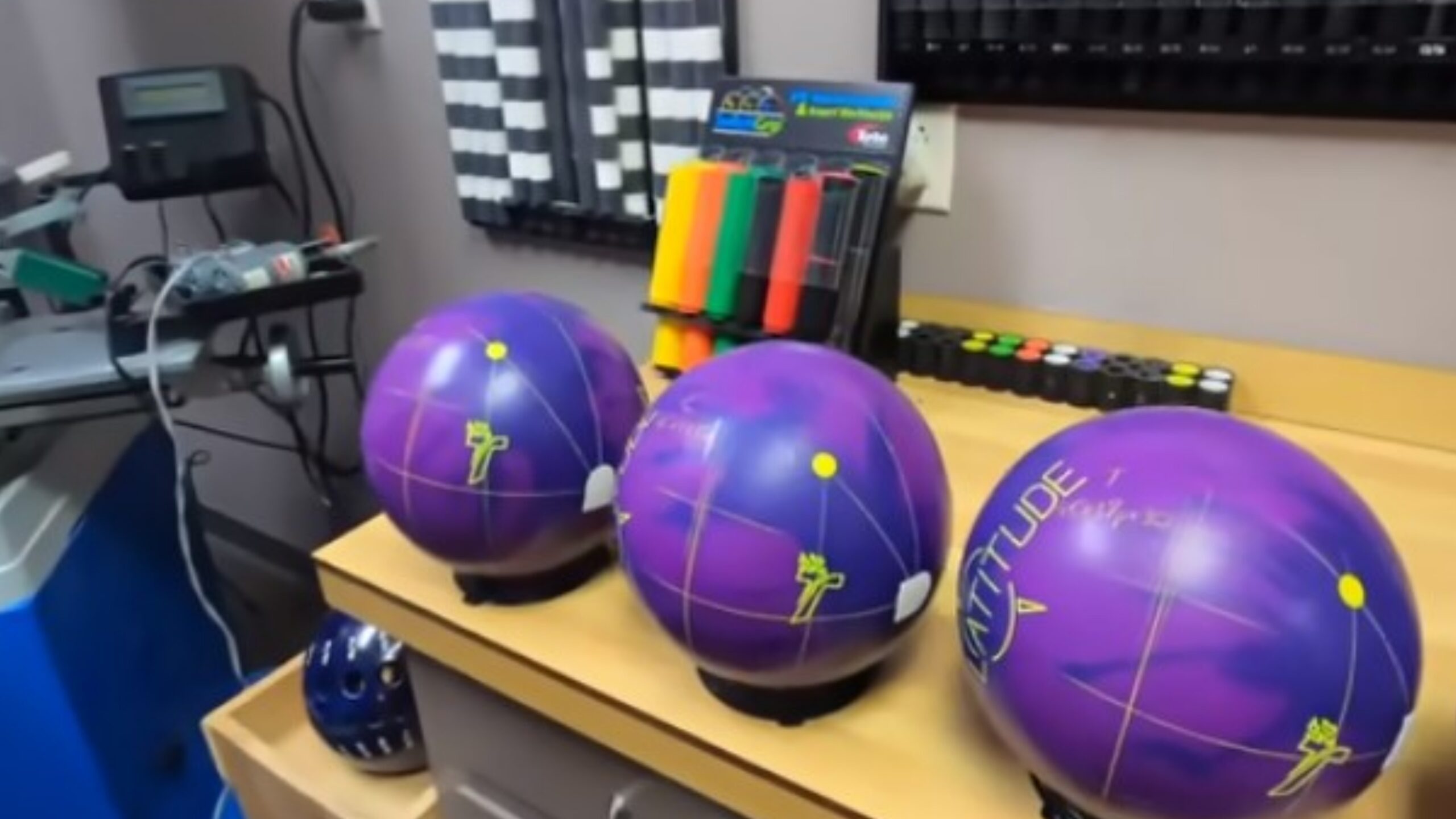In bowling, the term “differential” refers to the variation in track flare potential between the bowling ball’s maximum and minimum RG (Radius of Gyration) axes. It is a crucial characteristic influencing a ball’s hook potential and overall performance.
A higher differential indicates greater track flare potential, resulting in a more aggressive and angular motion down the lane. This dynamic feature allows bowlers to achieve increased pin action and adapt to varying lane conditions. Understanding what is differential in bowling ball is vital for players seeking optimal performance and versatility in their game.
In this article, we’re going to share everything about differential in bowling and how it impacts on the game. So, let’s dig into this article.

What Is Differential in Bowling Ball?
The differential refers to the imbalance in a bowling ball’s core. It’s what causes the ball to hook down the lane. A ball with a large differential, like 0.050, will hook more than one with a small differential, like 0.015.
Why does it matter? A higher differential means more track flare, so the ball grabs the lane aggressively. For most bowlers, a higher differential, asymmetric ball gives the best hook potential. However, high differentials also mean less control and require a higher rev rate to activate the core.
On the other hand, a lower differential provides more control and needs fewer revs to hook. Symmetrical balls, with a 0.000 differential, go very straight and are best for spares. For the average bowler, a mid-range differential, around 0.030 to 0.040, offers a good balance of hook and control.
Choosing the right differential comes down to your ball speed, rev rate, and how much hook you want. The differential, along with other factors like coverstock and surface prep, determines how your ball will move down the lane.
How Differential Works in Bowling Ball
The differential refers to the difference in weight distribution between the inner and outer core of the bowling ball.
A ball with a high differential, usually 0.050 or more, will have its weight concentrated more towards the outer core. This results in more track flare and hook potential. If you want a ball to move a ton on the backend, choose one with a higher differential.
On the other hand, a lower differential around 0.030-0.040 means the weight is distributed more evenly between the cores. This produces a smoother roll with less hook. If you want a ball for control that goes straighter, pick one with a lower differential.
The differential impacts how much your ball will hook. Understanding this spec will help you find a ball that matches your playing style. Whether you want a big hook or a controlled shot, you can’t go wrong by considering the differential.
What are the Effects of Differential on Ball Motion
The differential on a bowling ball affects how much the ball will hook down the lane. The higher the differential, the more the ball will curve.
Bowling balls with a higher differential like 0.050 or above, tend to hook more and move more on the backend of the lane. Balls with a lower differential, like 0.015-0.030, will have a smoother motion and less hook overall.
A higher differential means there is more of a difference in radius between the ball’s PSA (preferred spin axis) and its axis of rotation. This imbalance causes the ball to want to roll off its initial line of motion.
The greater this difference is, the more the ball will want to hook. So a ball with a 0.060 differential will hook much more than a ball with a 0.030 differential, all else being equal.
The differential of a ball, combined with its coverstock and surface preparation, has a significant impact on its performance. Understanding how differential influences ball motion can help you choose equipment that matches up well with your personal bowling style and the conditions you face.
High VS Low Differential Bowling Balls
When choosing a bowling ball, the differential refers to the difference in radius between the ball’s center of gravity (CG) and its positive axis point (PAP). In other words, it’s how much the ball’s weight is distributed around its core.
Balls with a higher differential typically 0.050 inches or more, tend to hook more on the backend of the lane. The uneven weight distribution causes the ball to rev up more, giving it a sharp hook at the end of its roll. These high-diff balls are good for heavy oil conditions where you need extra hooking action.
Lower differential balls, around 0.030 inches, have an even weight distribution so they roll straighter down the lane. They don’t rev up as much, so you get a smoother reaction that’s ideal for drier lane conditions. The smaller differential leads to less dramatic hooking action, giving you more control and predictability.
How to Choose the Right Differential for Your Game
Choosing the right differential for your bowling game is crucial for optimal performance. The differential, represented by the RG (Radius of Gyration) value, influences a ball’s flare potential and hook potential.
For bowlers seeking a more aggressive hook, a higher RG differential is preferable, as it enhances the ball’s ability to change direction sharply. Conversely, lower differentials result in a smoother, more controlled motion.
Consider your bowling style and lane conditions when selecting a differential. High-rev bowlers may benefit from a higher RG differential, providing a dynamic reaction down the lane.
Bowlers facing oily conditions may also find higher differentials advantageous for breaking through the oil pattern. On the other hand, lower differentials suit straighter shooters and those navigating dry lanes, offering a more predictable path.
When choosing a differential for your bowling ball, consider your playing style and typical lane conditions. A higher differential like .050, will create more hook potential, best for heavy oil or playing inside lines.
A lower differential around .030 offers less hook and works better for light oil or straighter shots outside. For most house conditions and styles, a differential of .040 to .045 is a great place to start.
Differential and Coverstock Relationships
The differential rating of a bowling ball refers to the difference in hardness between the ball’s coverstock and its inner core. The greater the differential, the harder the core is in relation to the coverstock. Differentials typically range from 0.0 to 0.8, with higher numbers indicating a greater difference in hardness.
A higher differential means the core will retain more energy as the ball rolls, causing an aggressive backend reaction. The coverstock has more friction with the lane, so it slows down more. But the harder core keeps spinning, creating more hook at the end of the ball’s path. Lower differentials produce an earlier, smoother roll.
So consider your needs. Want an angular, hooking motion? Choose a higher differential. Prefer control and predictability? Go lower. For most bowlers, a differential around 0.5 is a good place to start.
But be sure to also consider your ball’s coverstock, as that also significantly impacts reaction. The relationship between differential and coverstock is key to finding your ideal match.
How to Adjust Your Release for Different Differentials
To adjust your release for different differentials, you’ll need to make minor changes to your throw. The higher the differential, the more the ball will hook. The lower the differential, the less the ball will hook.
For a higher differential ball (0.050 or above), release the ball off to the right of your normal release point. This will reduce the amount of friction on the ball surface, causing less hook. You may also need to lower your ball speed to give the ball more time to react to the lane.
For a lower differential ball (0.030-0.040), release the ball closer to the center of your normal release point. This will put more friction on the ball surface, increasing hook. You can also increase your ball speed since the ball won’t react as much. Making these subtle changes will help you get the most out of any ball, no matter the differential.
Final Thought
So you got some ideas on what is differential in bowling ball and how it impacts your bowling ball motion and pin carry. Understanding this core specification is key to optimizing your ball reaction and scoring potential.
Now you can make a more perfect decision on your next ball purchase. Ask your pro shop operator about the differentials of the balls you’re interested in and how they might match up with your game.
The more you know about the technology in today’s bowling balls, the better equipped you’ll be to find the perfect arsenal to attack any condition. Thank you all for reading this article.

